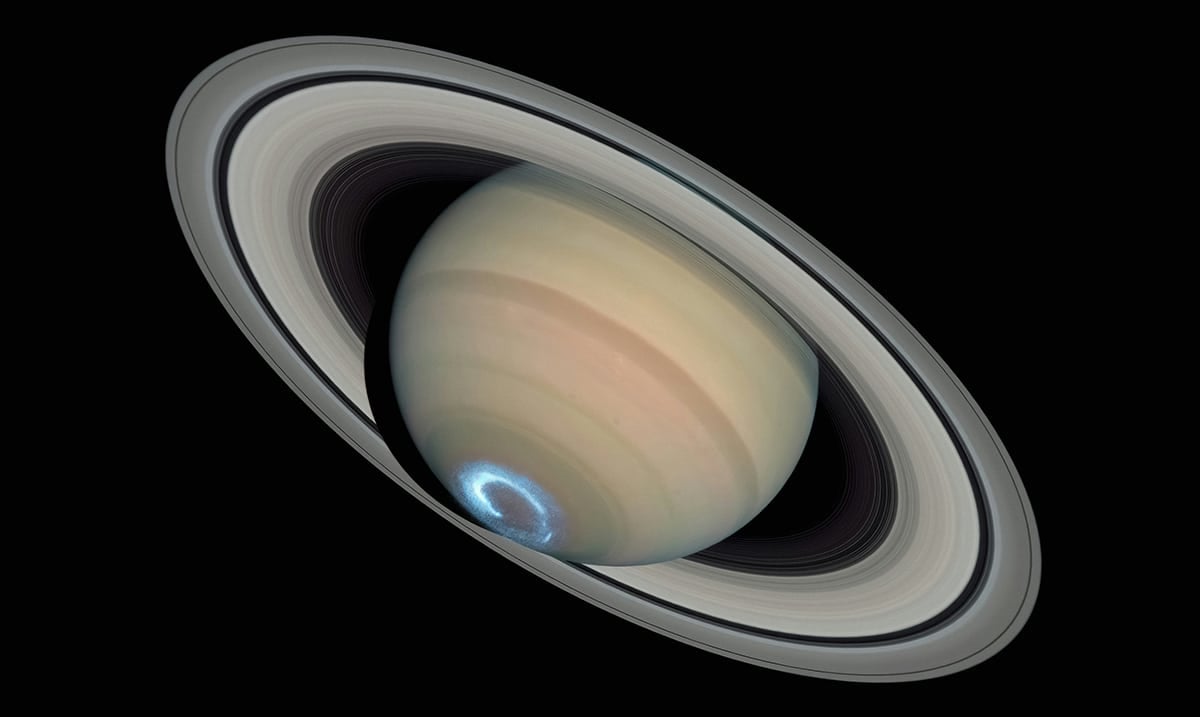Saturn’s iconic system of rings, often considered the most awe-inspiring feature in our solar system, has fascinated astronomers and stargazers for centuries. First observed by Galileo Galilei in the 17th century, who described the planet as having “ears” due to his telescope’s limitations, Saturn has become a symbol of celestial beauty and mystery.
Thanks to the tireless work of scientists like Galileo, we’ve been able to explore Saturn and its majestic rings in far greater detail. Modern astronomers, such as Dr. Lucy Jones from the Harvard-Smithsonian Center for Astrophysics (CfA), have used advanced technology to unravel the mysteries behind Saturn’s rings, including their composition and dynamic processes.
Saturn’s Rings and Axial Tilt
A significant cosmic event in March 2025 will temporarily alter our view of Saturn’s rings. Due to Saturn’s axial tilt, the rings will appear edge-on from Earth, rendering them nearly invisible for a brief period. This phenomenon, which occurs twice during Saturn’s 29.5-year orbit around the Sun, is akin to a celestial hide-and-seek. While the rings won’t actually disappear, they will return to view later in 2025 before vanishing again in November.
Saturn’s axial tilt, about 27 degrees, plays a major role in how its rings and moons appear to us. Just like Earth, Saturn experiences seasons, with different parts of the rings illuminated at different times. During these rare equinox events, sunlight hits both the northern and southern hemispheres of Saturn equally, providing a unique visual experience for observers.
The Composition of Saturn’s Rings
Saturn’s rings are primarily made up of ice particles, rocky debris, and cosmic dust. These particles range from tiny grains of sand to massive chunks the size of school buses, giving the rings their distinctive appearance. Far from being a solid structure, the rings are divided into several sections, including the A, B, and C rings, with fainter rings like the D, E, F, and G rings also visible under the right conditions.
The rings are separated by gaps, such as the famous Cassini Division between the A and B rings, which spans 4,800 kilometers. The gravitational pull from Saturn’s moons, particularly the “shepherd moons,” helps to maintain the structure and organization of the rings.
The origin of Saturn’s rings is still debated among astronomers. Some theories suggest the rings may have formed from the remnants of a moon or comet that was torn apart by Saturn’s gravity, while others believe they are leftover material from the planet’s formation over 4 billion years ago.
Cassini-Huygens Mission
The Cassini-Huygens mission, a collaboration between NASA, ESA, and the Italian Space Agency, provided invaluable insights into Saturn and its rings. The spacecraft, which arrived at Saturn in 2004 and completed its mission in 2017, revealed crucial details about the rings’ composition and dynamics.
One of the mission’s most significant discoveries was the intricate structure of Saturn’s moons and the gaps in the rings, including the Cassini Division. Additionally, Cassini revealed surprising information about Enceladus, one of Saturn’s moons, which has geysers that eject water vapor and organic materials, hinting at the possibility of a subsurface ocean.
Saturn’s Moons and Magnetic Field
Saturn has at least 145 moons, with Titan and Enceladus standing out due to their unique characteristics. Titan, Saturn’s largest moon, has a thick atmosphere and fascinating surface features. It also boasts a magnetic field, although weaker than Jupiter’s, and radiates powerful radio waves, especially from its polar auroras.
Enceladus, however, may be the most intriguing moon. The Cassini mission discovered essential ingredients for life beneath its icy surface. The moon’s geysers eject organic compounds, hinting at the possibility of habitability. Research by Jonah Peter, a Harvard University doctoral student, has further explored these findings, suggesting that Enceladus may possess complex biomolecules.
A Stargazer’s Opportunity
With Saturn’s rings set to disappear from view in March 2025, stargazers have a rare chance to observe this cosmic event. Saturn’s rings, made up of countless particles of ice and rock, offer a stunning reminder of the complexity and beauty of our solar system. Whether viewed through a telescope or high-powered binoculars, Saturn remains a mesmerizing target for both amateur and professional astronomers alike.
If you want over 200+ ideas, phrases, and text messages to drive your man wild with desire for you, make sure to check out my new program, Language of Desire. I give you step-by-step instructions and tons of exact words to use to get exactly what you both want in and out of the bedroom.
P.S. The reason so many men “pull away” from women is because
women don’t understand this naughty secret about men. . .


